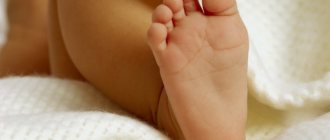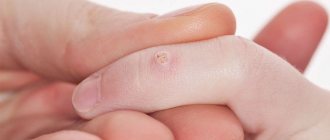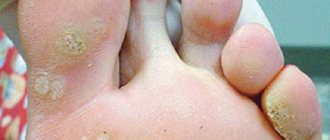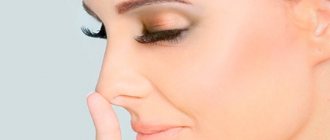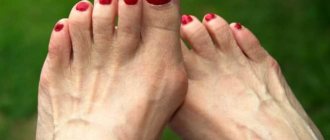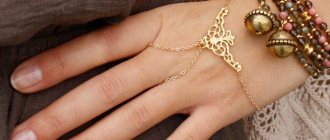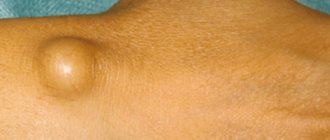Hands are the part of the body that is constantly in sight. It’s not for nothing that hands are considered the calling card of a person, and especially a woman – hands can tell how carefully and regularly a woman takes care of herself, “hint” at her age, hobbies and profession.
That is why you need to pay maximum attention to hand care, but what to do if an ugly wart appears on one of your delicate fingers? There is only one answer to this question - you need to get rid of the wart immediately, but first you need to thoroughly find out the reasons for the appearance of the ugly growth.
Warts on fingers - treatment at home
Although warts sometimes go away on their own, you should seek medical attention if the warts cause pain, discomfort, or cosmetic problems. Doctors may recommend home treatments, including over-the-counter medications.
Salicylic acid
People with warts on their fingers can try salicylic acid. Salicylic acid is a keratolytic substance, meaning it destroys skin cells. Apply salicylic acid directly over the wart, being careful to avoid the surrounding skin.
You can soak your finger in warm water for 5 minutes before treatment or use a pumice stone. These methods will help the drug penetrate the layers of skin containing active human papillomavirus (HPV). Salicylic acid is available in various concentrations, but American Family Physician recommends using 17% salicylic acid. This dosage is effective and people tolerate it well. However, some people may notice mild irritation at the application site. Treatment must be carried out twice a day for 12 weeks.
Imiquimod (Aldara)
Some doctors may prescribe Imiquimod (Aldara) cream to treat warts on the fingers. However, the Food and Drug Administration (FDA) has approved this cream only for the treatment of genital and perianal warts.
Patch
In 2020, researchers described treating warts in children using duct tape. According to experts, this procedure cures about 80% of warts. Although evidence for the effectiveness of this method is limited, the patch is safe to use and most people tolerate it well. According to the study, it is necessary to apply a small piece of plaster to the wart and remove it after 4-7 days. Once the patch is removed, you should clean the area with soap and water. Then use a pumice stone to remove the dead skin from the wart. The patch can be reapplied after 12 hours. People may need to repeat this cycle for 4-6 weeks.
The effectiveness of using duct tape to remove warts remains unclear. Therefore, doctors may recommend using this method along with salicylic acid or other known wart treatments.
Precautions for home removal
Improper treatment of growths can be complicated by wound infection, bleeding, and malignancy of the formation.
To prevent complications from developing, the following precautions must be observed:
- If pain, burning, or itching occurs, you should stop using the medications. It is advisable to seek medical help from specialists.
- Before using any product, consult your doctor.
- Do not exceed the dosage or frequency of taking medications or folk remedies.
- After removal, it is advisable to protect the pathological focus from exposure to sunlight and cosmetics for 2-3 months.
- Avoid damaging the wart.
- After removing the formation, try not to visit swimming pools, saunas, baths to prevent infection of the wound.
Removing a wart on a finger
Cryotherapy
Cryotherapy
is a procedure that uses liquid nitrogen to freeze warts to -196°C. This damages the different layers of the wart, which disappear after three to four cryotherapy treatments. Cryotherapy cures warts in 50-70% of cases.
Photodynamic therapy with aminolevulinic acid
Photodynamic therapy with aminolevulinic acid is a more expensive method for removing warts. Treatment involves exposing the wart to aminolevulinic acid for 3-8 hours. The acid makes the wart sensitive to light. The dermatologist then shines a light source on the wart, which causes the wart to destabilize and fall off.
Scientists in the journal Cosmetics, Dermatological Sciences and Applications reported high success rates using this procedure.
Other methods
Not all wart removal procedures are equally effective. According to a 2011 review, scientists have yet to determine the effectiveness of the following procedures:
- Bleomycin injection
: This procedure involves injecting an anti-cancer drug called bleomycin into the wart. Doctors may use this method to treat stubborn warts that do not respond to other forms of treatment. - Pulsed dye laser
: involves sending concentrated beams of light into the wart. The light destroys the blood vessels (capillaries) inside the wart but leaves the surrounding skin undamaged. - Surgical removal using curettage or cauterization
: Your doctor may remove the wart by scooping it out with a rounded loop blade (curettage) or burning it with a heated instrument (cauterization).
Warts: causes of appearance
Warty growths on the hands are formed when the papilloma virus (HPV) has entered the human body and managed to infect a sufficient number of cells. This virus is incredibly insidious - it can live in the human body for years without betraying its presence, and only under the influence of certain factors favorable for its development does it reveal itself for the first time.
We list the factors that contribute to the spread of HPV and the appearance of benign formations on the fingers:
- Stress, depression, lack of healthy and adequate sleep;
- Incorrect and unbalanced diet;
- Malfunctions of the immune system;
- Microscopic injuries and damage to the skin, which facilitate HPV penetration into dermal cells;
- Profuse sweating.
Under the combined influence of these factors, ugly bumpy nodules on the fingers usually appear.
The color of the formation can be brown or grayish, and black dots are often visible on its surface. It is possible to remove an unpleasant formation in two ways - using traditional medicine or by resorting to the help of recipes from traditional healers.
Rehabilitation treatment
Warts can last from several weeks to months. People will have to apply the wart treatment several times a day until the wart goes away. You need to know that warts often reappear, regardless of the treatment method.
Preventive measures to reduce the risk of further development of warts:
- don't bite your nails
- wear shoes by the pool
- Frequent hand washing helps clear the skin of viruses
People usually do not have any scarring or residual defects after the wart is gone.
How to remove a wart at home - on the hands, fingers, feet
Hi all! The topic of warts, unfortunately, is very close to my heart. About 7-8 years ago I suffered madly from them. At the moment I’m 25 and this infection appeared at a completely inopportune time... graduations, university, etc. It all started with the fact that one small wart appeared on the finger of the hand, since I had never encountered them before, I didn’t pay much attention and did not treat them with anything. Over time, there were more and more of them, the warts are such that today there are like 1 piece, and tomorrow you notice a bunch of new nodules. All the warts were only on my fingers. I started doing something after +/- a year, before that I was a fool and hoped that it would go away on its own. I neglected the situation greatly (at that time there were already 15 cases), which I later regretted more than once.
First of all, how do people get treatment? - That's right, through the Internet. So I started reading about all the possible options. I’m telling you about my experience: 1. Collomak was not a cheap product at that time. In practice, it has not shown itself to be effective at all, on large warts and those that have appeared for a long time. It can still do something on new nodules, but not always. 2. Wartner cryo is an absolutely ineffective product, do not waste money and do not be fooled by advertising. 3. All possible folk methods (vinegar, salicylic acid, herbs, potatoes, threads, the right moral attitude) are a waste of time! Well, all this also took me a lot of time. By this time, there were even more warts. And finally (lo and behold!) I went to see a doctor. I’ll be honest, it was embarrassing and not smart, because I myself understood that because of my own stupidity, I let myself go like that. The treatment chosen was Cryotherapy (removal of warts with liquid nitrogen). Many people write about the painlessness of the method, this is so... the first 20 minutes!!! The first time they treated 2 of my hands, after 40 minutes I held an ice pack in my hands to somehow remove the pain. In fact, the nitrogen burn method removes warts, but the feeling that appears after the procedure (during everything is ok, nothing is felt) is of course not at all pleasant, but the huge number and size of warts on my hands also played a role here . But not everything is so bad, the pain goes away the next day 100% No one can tell you exactly how many times you will need cryotherapy, everything is individual, but in my advanced case they did 3 painful sessions (each time absolutely all warts are treated) After a day or two in the treated areas blisters appear (well, everything is logical, a burn, etc.), which are not worth popping, believe me! And after 10-14 days, the skin is restored and the warts begin to peel off (like a scab from a cut). This is the most pleasant feeling when you see how healthy and clean skin appears in place of the wart) But not all warts are removed at once; many remain roots (small black “hairs”) and if even one is left, then everything will repeat. After I did 3 sessions of cryotherapy, the situation was already 85% better. But I still have a few warts left (5-7 pieces, which I had been growing for years before and the roots of which were sitting the deepest) I really didn’t want to suffer from nitrogen again and the doctor (when she already saw that you can do without nitrogen) advised me a remedy "pappilek". I thought it was something like a kolommak. But it turned out to be much better. When everything had healed after the last procedure, I applied papillek to the remaining warts. I say right away, you need to smear it very carefully, not to touch healthy skin, not in a thick layer, and it’s better before going to bed! The first time I did this, I then stood there using a pumice stone to wash my hands off, as it started to burn like hell. But this remedy helped, the next day the warts turn white and fall off over time. This was the end of my fight against this infection. In the end, I can say a couple of things - it’s better to see a doctor right away and not delay! Whatever the situation, it’s better not to engage in nonsense and don’t hope for “it will go away on its own.” And the most effective remedy that can be bought at a pharmacy, in my experience, turned out to be “pappilek”. Good luck to everyone in the fight against this nasty infection!)
Are warts contagious?
Dermatologists note that warts are contagious. A person can develop warts as a result of direct or indirect contact with another person's wart.
Direct contact occurs when part of a person's body touches another person's wart. Indirect contact occurs when part of a person's body touches an object that has previously come into contact with another person's wart.
Examples include touching a doorknob that another person has touched, or walking barefoot in a public swimming pool.
Human skin provides some degree of protection against HPV. Thus, if a person with broken skin comes into contact with HPV, they may be at greater risk of contracting the virus.
How are warts transmitted and why do they appear?
Why do warts appear on the hands and fingers? What are their causes and how are they transmitted? Almost 20% of adolescents and children have at least once had contact with warts among their environment, and in 10% they arise at different ages. Infection with papillomaviruses of various types occurs very easily in the presence of microtraumas on the skin:
- as a direct route through direct contact of the affected skin with healthy
- and through everyday life - through clothing, personal hygiene products, household items
The following types of HPV 1-5, 49, 57, 19-24, 26-29, 1, 12, 10, 14, 15, 17, 19 are to blame for the occurrence of warts and plantar warts. The incubation period of these viruses is 2-6 months . However, even when papilloma is infected with viruses, a strong healthy body easily stops their reproduction and progression, therefore the main reason for the development of warts on the skin in children and adults is a decrease in the body’s defenses - poor nutrition, prolonged stress, hormonal imbalances, overwork, negative external impacts such as radiation, chemical emissions from industrial cities, chemically processed food products, and other factors.
The virus is transmitted most quickly in rooms with warm and humid air, so saunas, swimming pools, baths, sports halls, and gyms are the most common places for transmission of infection.
The favorite location of warts on the hands is obvious, since the greatest contact during work, games, at home, and in the external environment occurs through the hands.
And also the desire of children to scratch or tear off warts can contribute to the spread of the virus to other areas of the skin; the habit of some children to bite their nails can also contribute to the penetration of infection under the nails. Lack of treatment for warts under the nails and on the fingers leads to their growth, multiple reproduction, fusion or damage to the nail.
What happens when infected? Viral agents of HPV penetrate through scratches, injuries, microcracks in the skin into the blood. The viral DNA in the human genome then leads to an abnormal process of cell proliferation. In this case, there is an increase in blood flow to the site of infection by the virus, which contributes to the rapid growth of these cells. Sometimes this process can be very rapid, when a wart appears within 1-2 weeks, and sometimes it drags on for several months, so a person does not always immediately notice its appearance.
Prevention
Preventative measures play an important role in the process of removing warts. Changing your lifestyle to a healthier one significantly speeds up treatment and prevents the appearance of new growths. To begin the natural restoration of the body's defenses, you need to adhere to the following recommendations:
- observe hygiene standards;
- promptly treat infectious diseases;
- eat a balanced diet;
- observe work and rest schedules;
- avoid stress and overwork;
- provide the body with vitamins and minerals;
- alternate mental and physical work.
As soon as the immune system is restored, new papillomas will stop growing, and the old ones will gradually die off.
Wart definition and symptoms
Diagnosis of these papillary or nodular formations usually does not cause difficulties. An experienced dermatologist determines their appearance by appearance and prescribes treatment ; in rare cases, a biopsy is necessary.
Warts located on the palms and fingers are of the following types:
- vulgar (simple) - tuberous formations up to 1 cm in size, rising above the surface of the skin, from flesh to light brown in color with black dots (thrombosted capillaries) in the middle.
Young warts are lighter, smooth, while older ones are dark, with a rough structure. They tend to merge, taking on a tumor-like form. This is the most common type of formation, accounting for 70%.
- flat (youthful) - usually multiple, occur at the age of 10-30 years, often in adolescence, transparent or light shades, painless, size up to 5 mm.
Sometimes they look like freckles or moles, but remain undiagnosed and do not cause inconvenience to a person.
- senile warts (keratomas) – are not of a viral nature, appear due to age-related changes in the epithelium, and are often transformed from age spots. They have an unaesthetic scaly appearance.
If they do not interfere, then no treatment is carried out.
Prevention of warts
The main preventive measure in this case is aimed at maintaining personal hygiene. Hands are the most open and in contact with the outside world part of the body.
Therefore, prevention includes regular hand washing , especially after visiting public places, treating them with antiseptic agents, and using personal hygiene items (towels, wet wipes).
You should not touch other people's warts.
To prevent relapses, antiviral and immunomodulatory therapy is used.
Many methods are used to combat the described cosmetic flaws: conservative, surgical, and traditional medicine methods. Unfortunately, none of them provides an absolute guarantee of complete freedom from warts and the absence of relapses in the future.
By following basic rules of hygiene and a healthy lifestyle, you can significantly reduce the risk of such unpleasant cosmetic defects as warts. If present, these measures contribute to faster healing or even spontaneous disappearance of formations.
Reason to urgently consult a doctor
A dermatologist or oncodermatologist is involved in diagnosing, treating and removing the described skin formations . Manipulations to remove them can also be carried out by a surgeon.
The prognosis for the treatment of warts is favorable; they do not pose a serious danger, so they do not require emergency medical care and may even disappear spontaneously. However, in certain situations, it is recommended not to delay in contacting a doctor :
- if the wart is injured and, especially, begins to bleed. In this case, there is a high risk of the formation spreading to other parts of the body;
- when color or shape changes, increases in size, or heterogeneity of structure;
- when pain, itching, burning appears in the area of the wart;
- if the formation multiplies or is located in such a way that it is subject to permanent injury;
Seeing a doctor in these cases is necessary for correct diagnosis of the defect (it is necessary to differentiate a wart from skin tuberculosis, basal cell carcinoma, keratoma, etc.), as well as for the purpose of prescribing adequate conservative or surgical treatment.
Diagnosis and removal of soft growth
A viral wart can be recognized during the initial examination of the patient. In this case, diagnostics are prescribed only to identify the level of its oncogenicity.
To establish a more accurate diagnosis, the doctor performs a biopsy (taking a sample of the tumor) and sends the biological material for histology. Based on the results of laboratory tests, the dermatologist selects the necessary treatment.
Important! If the diagnostic results indicate that a large wart growth has a high level of ocular pathogenicity, then the only solution to the problem is its complete surgical removal!
It is advisable to remove a benign neoplasm using cosmetic methods:
- laser cutting;
- destruction of the build-up by electrical current or radio waves;
- freezing with liquid nitrogen.
The listed methods can completely cut off a watery wart and there will be no scars left in its place.
How are warts removed?
Treating skin tags helps prevent them from spreading further to other areas of the body.
Most often, specialists resort to the following methods of removing tumors :
- laser removal - in this case, papillomas are removed without scars, and damaged skin heals very quickly;
- removal with electricity - when removing warts with electric current, a small scar may remain; in addition, the method is only suitable for superficial removal;
- cryotherapy - several sessions may be required to remove tumors with “cold” treatment. Liquid nitrogen effectively fights even a large number of tumors;
- surgical intervention is sometimes necessary if there are too many warts or they have “merged” into a single growth.
Important ! You should not cut off the affected skin, because in this way the wart can not only grow back, but also become larger in volume.
To prevent growths from bothering you,
you need to adhere to the following rules :
- it is important to take vitamins and immunostimulating drugs, especially during the cold season;
- adjust your diet by including foods rich in microelements and vitamins in your diet;
- learn to cope with stress and normalize your daily routine;
- it is important to observe the rules of personal hygiene and avoid using other people’s things;
- spend more time in the fresh air and introduce sports into your life.
Note! Following simple rules and recommendations will allow you to avoid re-infection and defeat the virus already present in the body naturally.
Warts from intestinal parasites
often associated with the presence of intestinal parasites. However, do not forget that only the human papilloma virus can cause the appearance of a tumor.
Despite this, these two events may still be interconnected.
Remember, intestinal parasites are not the direct cause of tumors, but they prepare the ground for their appearance!
The fact is that helminths, especially in large quantities, produce toxins that can affect the body, reducing immunity.
At the moment when the body's defense reactions decrease, a favorable environment is created for the development of the papilloma virus. Therefore, if you find growths on your hands, you should get tested for helminthiasis.
Where do they come from
A huge wart, liquid in appearance, is the result of the activity of a papillomavirus infection entering the body from the outside. You can become infected with it:
- when wearing someone else's clothes;
- during unprotected sexual intercourse;
- when using other people's personal hygiene items;
- through physical contact with an infected person (handshakes, hugs, kisses).
The disease can also be hereditary and transmitted from a sick woman to a child during pregnancy.
A number of factors can increase the likelihood of contracting the virus:
- chronic dermatological diseases;
- serious diseases of internal organs;
- unhealthy lifestyle (smoking, drinking, drug addiction);
- insufficient hygiene;
- decreased immunity (seasonal, during pregnancy, after surgery).

